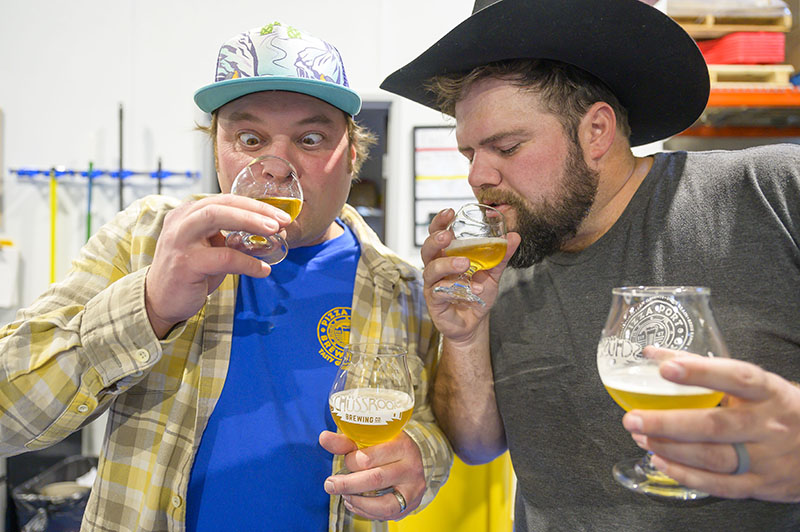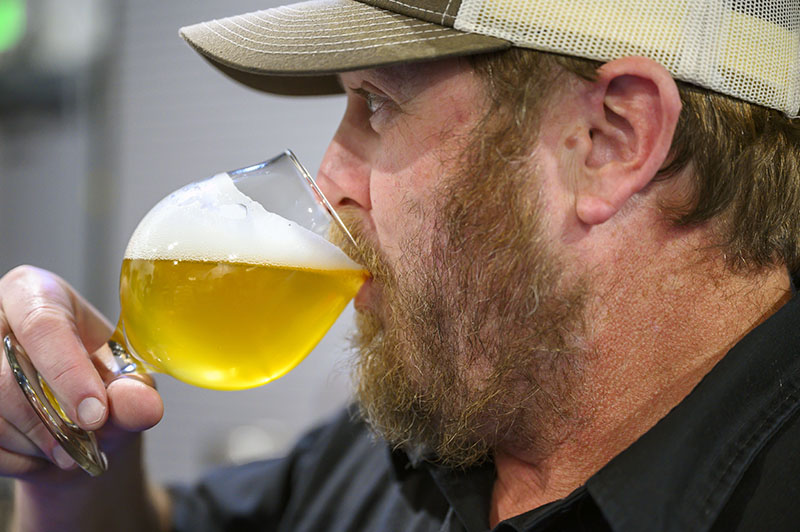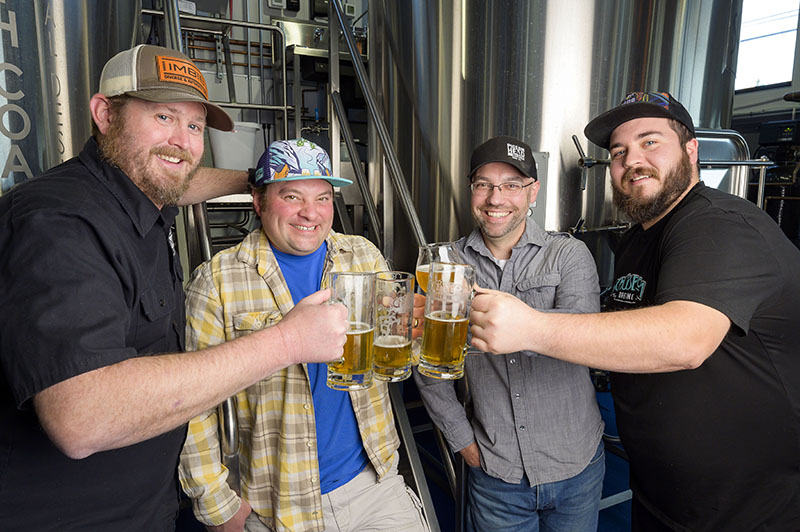Local brewers share views on competition, quality, and the industry in general.
Local craft brewers are preparing for the next five years as a competitive and quality-focused beer industry continues to push them to evolve.
“The brewing industry has matured,” says Matt Johnson, co-owner of IMBĪB Custom Brews in Reno and Sparks. “Craft beer is finally in decline in sales for the first time in 25-plus years. There are more breweries now than there ever were. I call this ‘phase three’ of craft beer.”
Johnson, who opened his first brewery almost 10 years ago on Second Street in Downtown Reno, calls the last couple of decades phase two, when homebrewers became professionals with small-scale equipment, tiny taprooms, and a passion for invention.
During the last 15 years, thousands of breweries opened nationwide, and almost 20 started in Northern Nevada. But not all of them survived until 2023, weathering both the Covid closures and continued flood of craft beers in the market, Johnson says.
“You’re going to see some closures,” he says. “It’s time for the strongest to survive now that you can no longer make a mediocre product and get away with it, and you could for a long time,” Johnson says.
He joined me in a conversation, along with Jason Wagner, founder and vice president of Schüssboom Brewing Co. in Reno; Evan Eldridge, former head brewer at Great Basin Brewing Co. in Reno, Sparks, and Carson City as well as the new head brewer at Schüssboom; and Bryan Holloway, co-owner and head brewer of Reno’s Pigeon Head Brewery, to talk about what they’re seeing in the local beer scene and how it’s evolving.
Finding New Flavors
Schüssboom, which opened three years ago, is one of the newest breweries in the region. With a large kitchen and even larger dining area meant for families, Schüssboom was Wagner’s longtime dream project. To bring customers to the brewpub, Wagner says the brewery distributes some packaged beers and kegs for awareness marketing but mainly focuses on rotating taps on the foaming edge of beer science and trends.

Lately, brewers at Schüssboom and IMBĪB have been experimenting with thiols — a newly unlocked sulfur molecule found in hops and grain. Labs now produce brewer’s yeast with enzymes that pull fruity flavors from those sulfurs.
“We brewed a beer that has a very, very small amount of hops in it, and it’s a light lager,” Wagner says. “But by releasing these thiols into it, it got this extremely fruity flavor. So you get a major amount of flavor out of just barley. It’s really wild.”
Pigeon Head Brewing Co. opened almost 10 years ago, focusing primarily on lagers, and moved quickly to distributing beer to bars and retailers. After Holloway took over, the focus returned to bringing customers into the taproom, but the emphasis on exceptional lagers remains the same.
“Lagers are on the rise,” Johnson says. “These are going to dominate for a long time. But the only thing I would add is that compared to the craft beer demand and typical consumer of 20 years ago, I don’t think the trend is about brand loyalty anymore. It’s about what’s new and fun.”
Johnson says that in terms of making beers, consumers will chase the new best flavor. Eldridge agrees. When he worked at Great Basin Brewing, customers came back for “Icky” IPA over and over, but that’s not true for the new crowd going to Schüssboom.
“It’s rare to see people who just come in and drink the same beer over and over,” Johnson says. “That was definitely the case in the ’90s and early 2000s.”

From Tap to Glass
In July 2023, Great Basin, one of the first Nevada breweries, which opened in 1993 (what Johnson would call “phase one”), announced an alliance with Sparks’ Revision Brewing Co. Part of that partnership included closing Taps & Tanks, Great Basin’s brewing and events space in Reno.
The alliance between the two breweries mirrors what happens when national or international beer companies buy medium-sized craft breweries. These mergers often open new channels for distribution and allow the smaller brewery’s footprint to expand. Great Basin plans to reap similar rewards with its new relationship and focus on the three brewpubs that serve loyal customers, while the Revision production facility boosts beer production across the country.
Many new breweries are forced to choose whether to focus on production and distribution, an in-house taproom, food service, or a combination of them all. It is difficult to do all three and prosper, Eldridge says. Revision only focuses on production and distribution while serving guests who come to its large production warehouse. Eldridge says Revision Brewing’s success can be tied to its focus on production, contract brewing, and sales of beer outside of Nevada. Revision produces almost 620,000 gallons of beer annually and distributes it to eight countries and 15 states. In comparison, many other local breweries distribute to surrounding Western states while also keeping up with their taproom and restaurant demands.
“It’s hard to survive in Nevada because of the three-tier system,” Eldridge says. “We all have to go through a distributor. We can’t just say, “’Hey, you want this? We’ll bring it to you.’” (Read more about the three-tier system in our story “Sour Grapes,” in edible Reno-Tahoe’s Summer 2021 issue.)
Some other states allow breweries to sell directly to retailers. The three-tier system is often cited as the reason why the Nevada craft beer industry stays small.
“Our goal is now to sell as much as possible directly to the consumer,” Johnson says. “Yes, I want to be on tap around town because it’s great marketing for us, but the reality is that everything I’m doing is trying to drive people to my two spots.”
Holloway agrees.
“It’s always better to sell your beer directly to the consumer, and that’s ultimately what everyone’s after,” he says.
Pigeon Head distributes most of its beer to other bars and retailers, but Holloway says that only accounts for half his profits. The rest comes from people visiting the brewery tucked away under the Wells Avenue bridge on Fifth Street in East Reno.
“The numbers are much better bringing people in, and you want to see people and show them your facility,” he says.
For Johnson, that includes hosting events, beer release parties, and educational nights. Wagner agrees.
“Ultimately, for us to survive and be able to pay ourselves a living wage, I need to sell you a beer over the counter,” Johnson says. “And so everything we’re trying to do that’s innovative is focused on that.”
RESOURCES
Great Basin Brewing Co. Greatbasinbrewingco.com
IMBĪB Custom Brews Imbibreno.com
Pigeon Head Brewery Pigeonheadbrewery.com
Revision Brewing Co. Revisionbrewing.com
Schüssboom Brewing Co. Schussboombrewing.com


